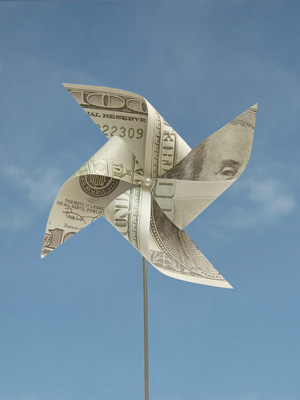Congress' $2 trillion dollar clean energy challenge
 Two trillion dollars is a lot of money.
Two trillion dollars is a lot of money.That’s how much experts expect the world’s economies will spend on clean, renewable energy between now and 2020.
As an advocate for technologies such as wind and solar power, energy efficiency, and geothermal energy, I’m thrilled at the prospect of all that investment in clean, renewable power. After all, renewable energy has produced jobs by the tens of thousands annually here in the US in recent years—jobs for construction workers and engineers, accountants, secretaries and scientists. Renewable energy creates clean air for our kids to breathe. As the father of two beautiful girls, this is what drives me the most. And, importantly, clean, renewable energy promotes American self-reliance. It can free us from some of the world’s military and economic conflicts over energy.
But as excited as I am about the incredible advances renewable energy has made, I am equally concerned that the US will miss out on the paradigm shift in the world energy market. That concern was highlighted recently by the release of three important reports, one from Third Way, one from the Pew Charitable Trusts, and one published jointly by the Breakthrough Institute, the Brookings Institute and the World Resources Institute. All three highlight that we’ve made incredible progress in the last several years towards a clean, renewable energy future. But all three also point to the same conclusion: We can let slip this incredible economic opportunity if we allow key federal incentives for clean, renewable energy to expire.
The Third Way report likened our current moment to one faced by photography giant Kodak which failed capitalize on its early—in fact, industry-leading—digital photography technology. Congress, too, seems to be having a Kodak moment, failing to grasp the energy paradigm shift now underway. Perhaps that’s why, they’ve let several key renewable energy incentives lapse, including the Section 1603 cash grant program for solar, credited with producing 75,000 jobs. Others, like the Production Tax Credit for wind, and several advanced energy manufacturing incentives will expire soon, reduce employment in wind by 37,000 jobs.
All told, per the Institute report, federal investment in clean, renewable energy will fall to just a quarter of its 2009 total by the end of 2014. If we fail to continue investing in renewable energy, we’ll lose our recent global leadership in clean energy investment to countries such as China, Germany and South Korea. They’re still pouring hundreds of billions of dollars into this exciting field, just as it’s starting to transform the way the world gets power.
World renewable markets are growing exponentially of late. Less than ten years ago, solar power was a cottage industry. Now, it’s what a recent report by McKinsey & Company calls “a $100 billion business with global reach.” Federally funded advances in both in technology and in the way that technology is deployed have helped drive this growth. Already, the price of wind power has dropped 90 percent in the last 30 years, thanks to innovations developed at the National Renewable Energy Laboratory and promoted through the soon-to-expire Production Tax Credit.
Similarly, the price of solar electricity has plunged over the last eight years, as government incentives and standards have driven both demand and incredible economies of scale. In 2004, one manufacturer of US-made solar panels sold them for $2.94 a watt. Today, their price is 73 cents a watt—75 percent lower.
That’s why it’s troubling, and a bit perplexing, too, to see Congress oppose the extension of programs that have driven so many advances and produced so many jobs in this burgeoning field. Clean, renewable energy creates jobs, cleans the air our kids breathe, and reduces our dependence on dirty coal and foreign oil. Let’s not miss out on the economic chance of a lifetime by pulling the rug out from under these programs. They spur clean, renewable energy’s success, both in the US and in the $2 trillion world market.
You can return to the main Market News page, or press the Back button on your browser.

